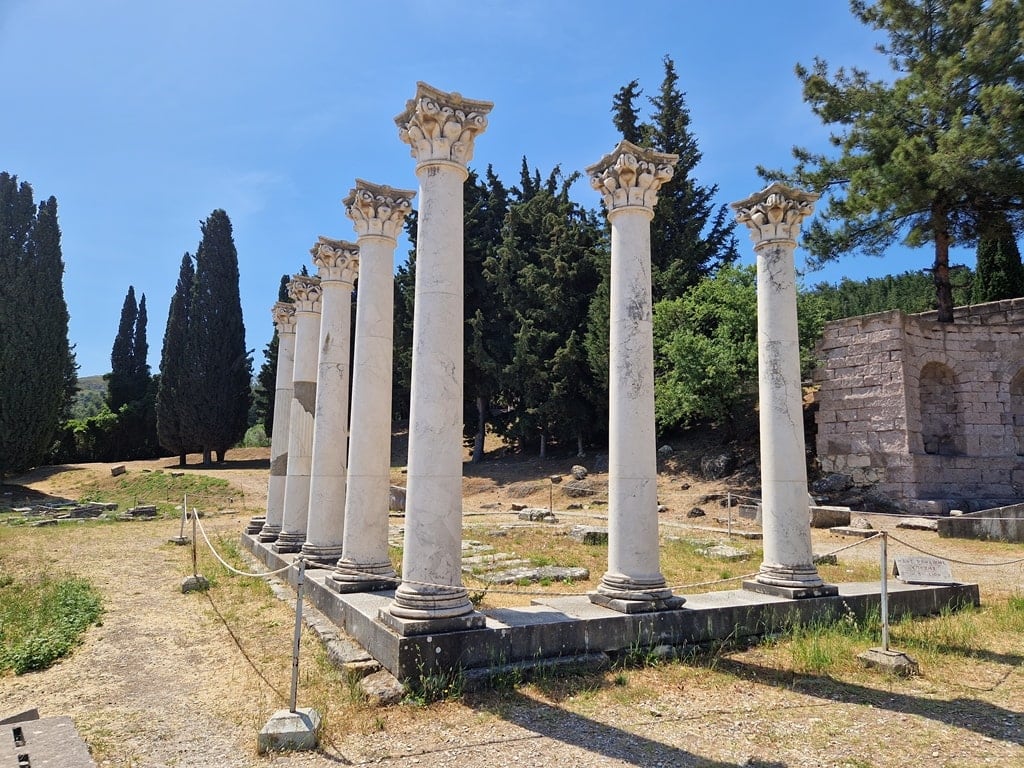Kos island is one of the gems of the Dodecanese in Greece. A gorgeous island with lush, verdant hills, picturesque towns and vineyards, rich culture, and stunning history is just waiting to give you your best vacation.
Kos’ history holds a bit part of the locals’ pride, with many archeological sites and other historical places to visit. Of those, the astounding Asklepion, the medical center of the ancient world during the Hellenistic period, is the most important and powerful. When you visit Kos, visiting the Asklepion will have to be at the top of your list of things to experience.
This guide will ensure you get the best experience visiting the Asklepion by telling you everything you need to know to enjoy it to the fullest!
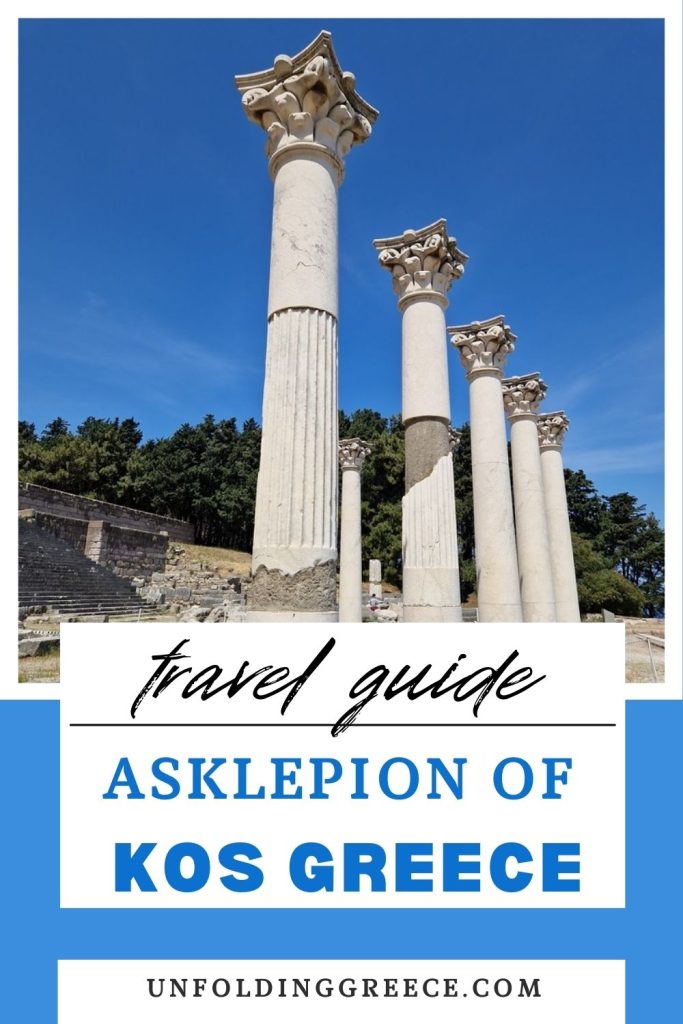
Disclaimer: This post contains affiliate links. I will receive a small commission if you click on certain links and subsequently purchase a product.
Where is the Asklepion?
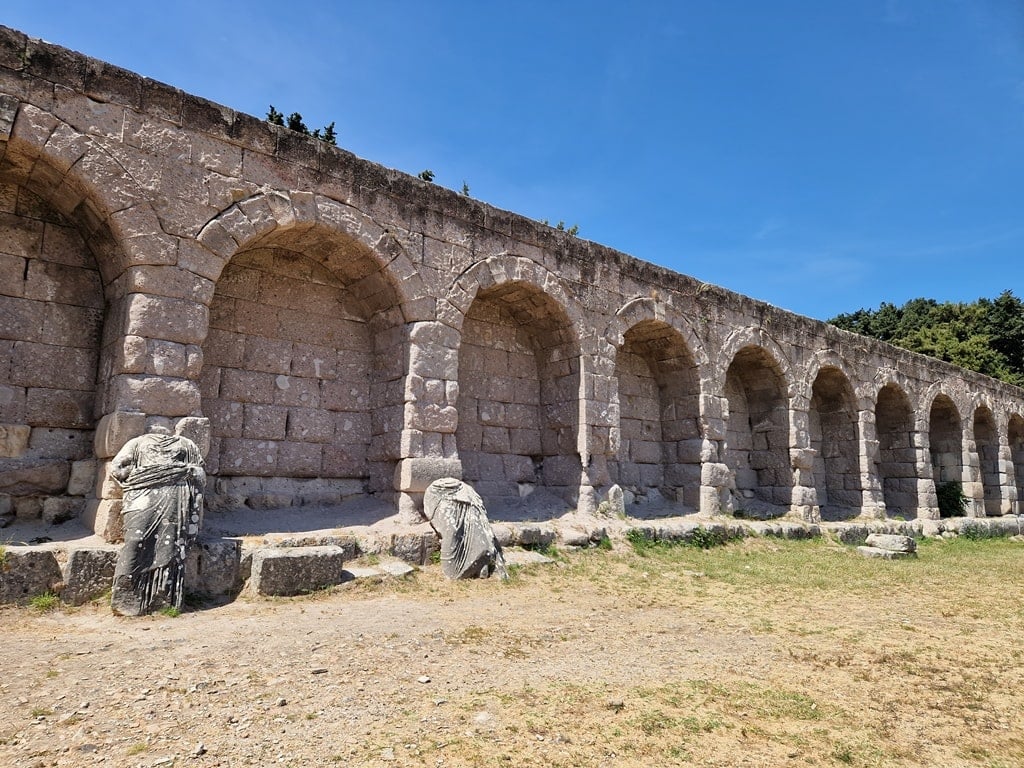
The archeological site of the Asklepion is very near Kos’ main town (Chora). You will find it 3.5 km southwest of it, and there are main roads leading to it: Asklepiou street and Aghiou Dimitriou street.
You can easily get there by car or taxi, following these roads. However, you can experience the short trip by getting there by bicycle or motorbike! Kos is keen on bicycles, so it’s a great opportunity to enjoy the scenic route.
You can also take the bus to the Asklepion, from several points in the town and other areas in Kos. Buses are frequent, so you don’t need to worry about booking seats. You can even use Kos’ nobby train to get there while also getting a tour of the town, but make sure you can hop on and off before you book a seat, as specifications may vary.
To best enjoy the Asklepion, make sure you wear comfortable walking shoes. Arm yourself with a good sunhat, pair of sunglasses, and sunscreen to protect yourself against the relentless Greek summer sun. Remember that even if you visit off-season, you will only benefit from having good sunglasses!
Admission and ticket information
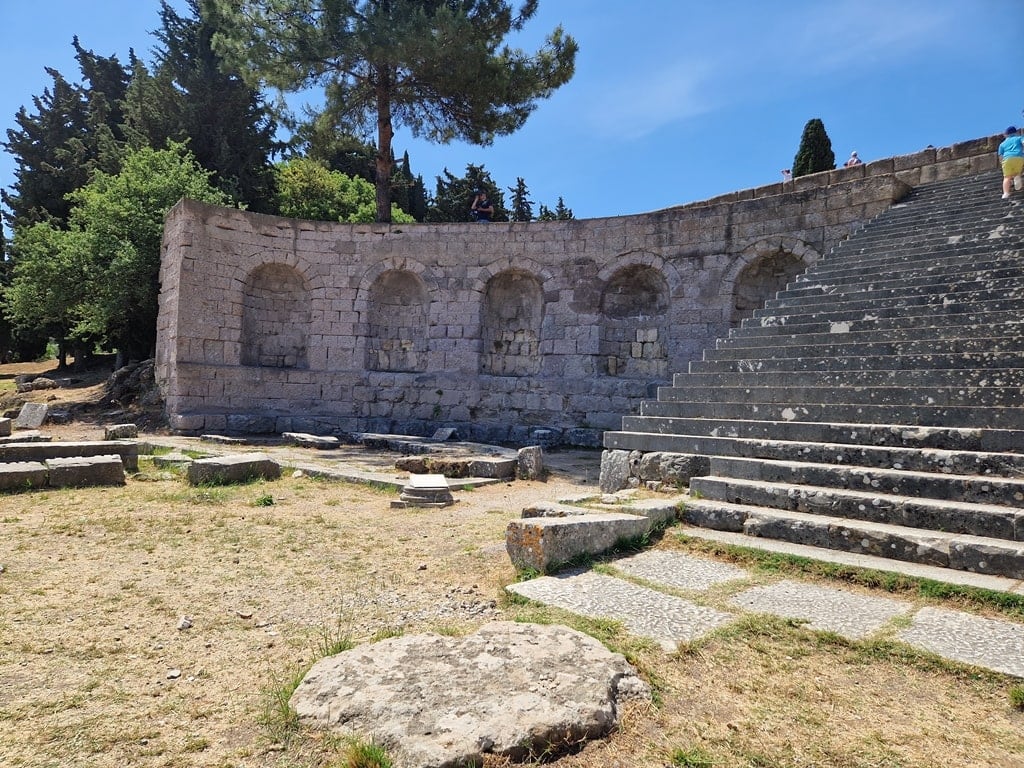
The full-price ticket for the Asklepion, which also gives you access to the archeological site of the Roman Odeon, is 8 euros. The reduced ticket is 4 euros, available if you are over 65 (you must show some ID or passport). Admission is free for certain groups, such as children or EU students. You can see the full list of eligible for free admission here.
Consider that for a 6 euro ticket, you can get access to not only the Asklepion and the Roman Odeon, but also the Archeological Museum and the Roman Villa, so you might want to purchase that for better value for money.
Even if you don’t belong to any of these categories, you can be granted free admission on the following days:
- March 6 (Melina Merkouri Day)
- April 18 (International Monuments Day)
- May 18 (International Museums Day)
- The last weekend of September (European Heritage Days)
- October 28 (National “No” Day)
- Every first Sunday from November 1st to March 31st
The standard visiting hours for the Asklepion are from 8 am to 5 pm, Monday through Sunday. Remember that the last admission is at 4:30 pm, with 30 minutes on the clock for you to explore the site.
The site is fully accessible to people with mobility issues.
Click here to book your skip-the-line ticket to the Asklepieion.
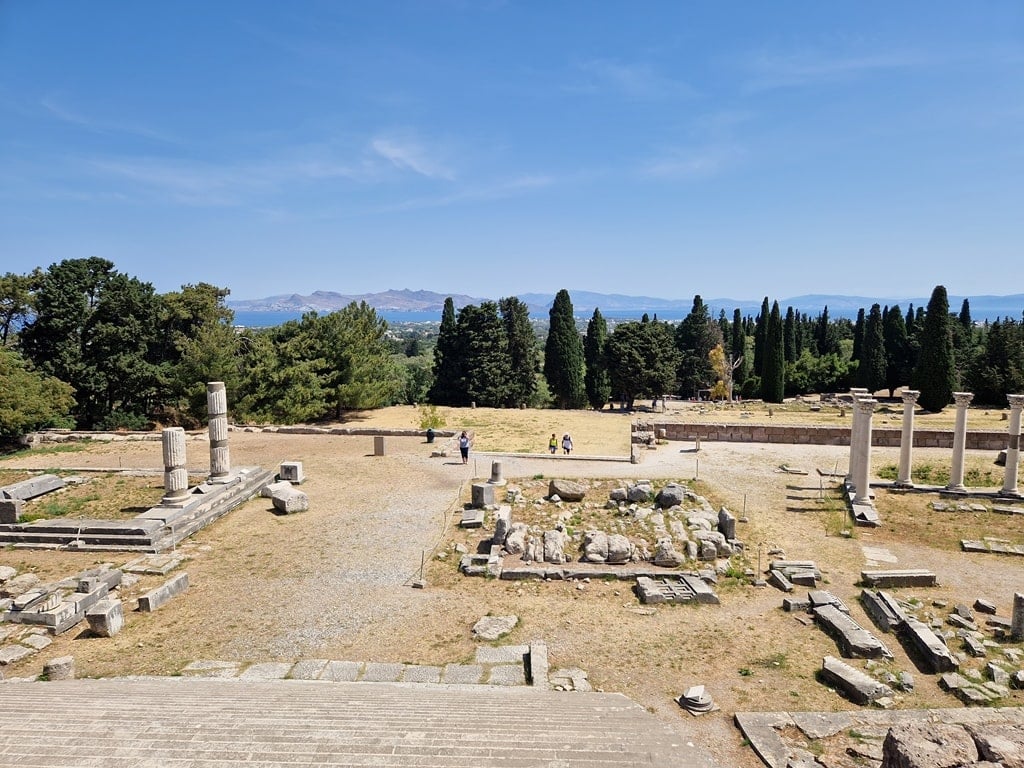
The mythology of Asklepion
The Asklepion was a medical center and a place of worship of the ancient Greek god of medicine, Asclepius, whose name was given to it.
Asclepius was the son of Apollo, the god of light, music, and prophecies, and Koronis, the daughter of the king of Thessaly. When Apollo heard that Koronis was about to get married to a mortal, despite her union with him, he became mad with jealous anger and consumed her in flames.
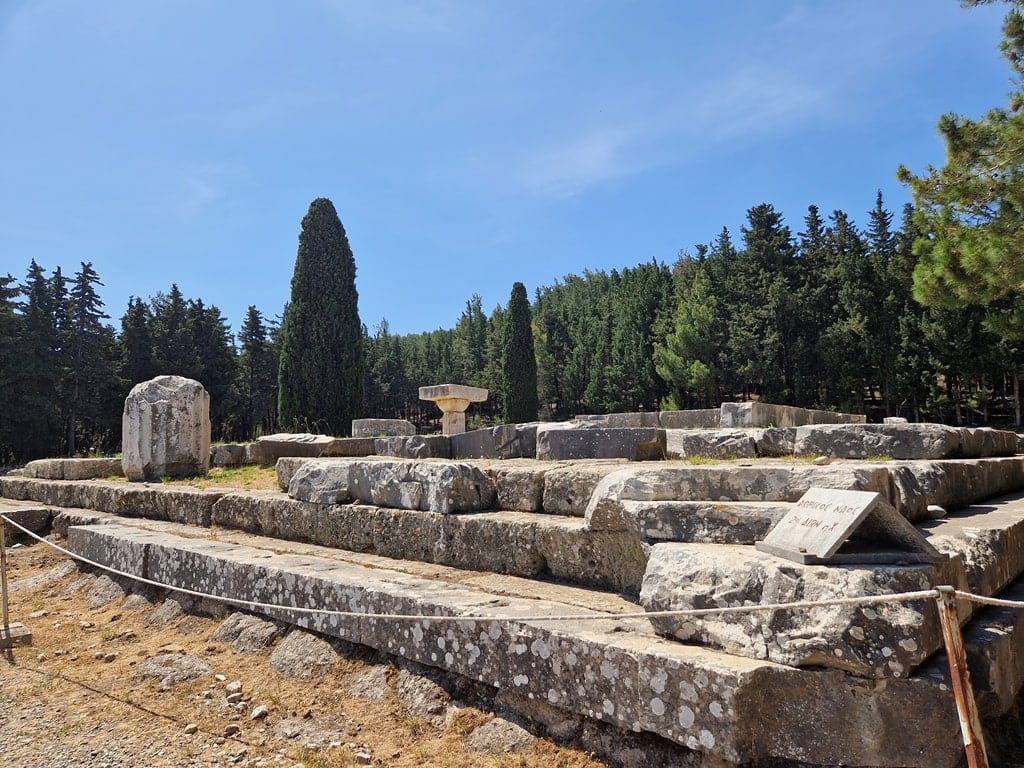
However, she had been pregnant, and Apollo saved the fetus from burning with her. He then entrusted the baby to the centaur Chiron. Chiron is known for his wisdom and teaching virtue, but also for his healing abilities, which he taught to the precocious young Asclepius.
Asclepius became a powerful healer, even more so when Athena, the goddess of wisdom and war, gave him the blood of Medusa, which could heal or kill, depending on which artery it came from. The blood of Medusa, regardless, Asclepius is said to have become such a powerful healer, knowledgeable and able to uncover the secrets of life and death, that he could bring people back from the dead.
That was ultimately his doom because Zeus (or, in other myths, Hades) feared that Asclepius’ capacity to keep death from taking mortals would unbalance the world. So Zeus (either on his own or at Hades’ appeal) killed Asclepius by a lightning bolt.
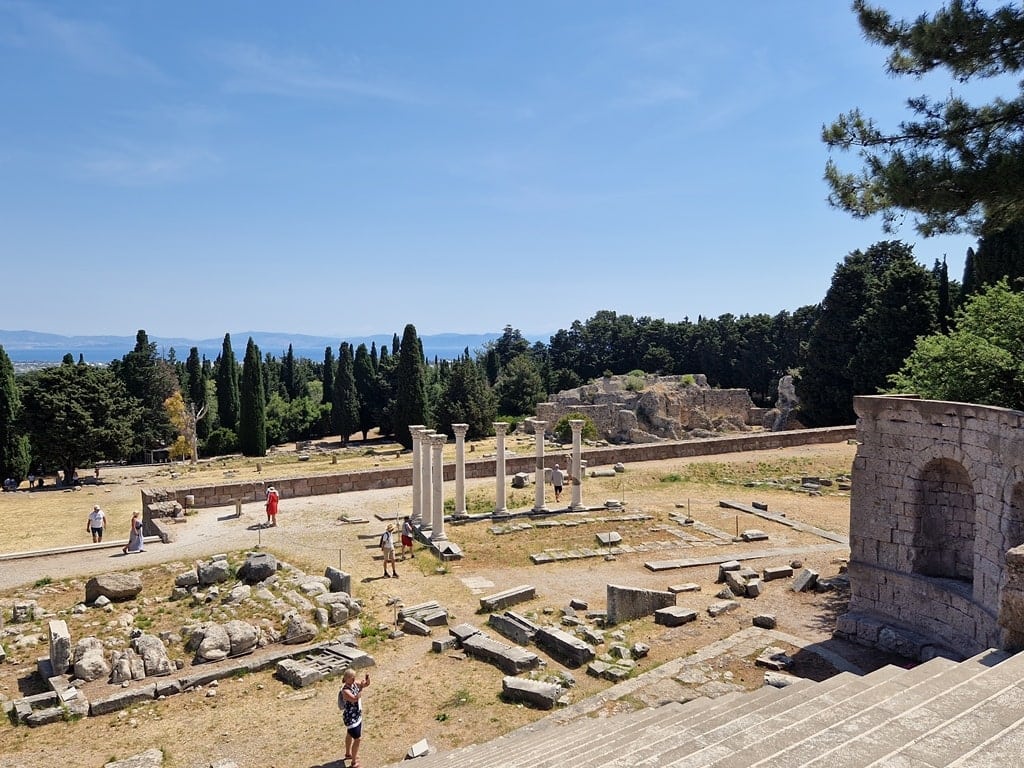
However, when Apollo learned that his beloved son was killed, he was enraged, and in retribution, he killed the Cyclopes that forged Zeus’ lightning. For this crime, Zeus was about to toss Apollo into Tartarus, but Leto, Apollo’s mother, intervened.
Instead, Apollo was banished to serve Admetus, the king of Thessaly, for a year. Touched by Apollo’s grief and Leto’s appeals, Zeus resurrected Asclepius as a god, giving him a place in Olympus. Ever since Asclepius became the god of medicine. This mythology around Asclepius was observed by physicians of ancient Greece, who were members of Asclepius’ cult.
The practices of the Asklepion
In Asclepius’ name, the Asklepion in Kos was founded, which served as a temple, religious site, hospital, and medical research center devoted to medical science.
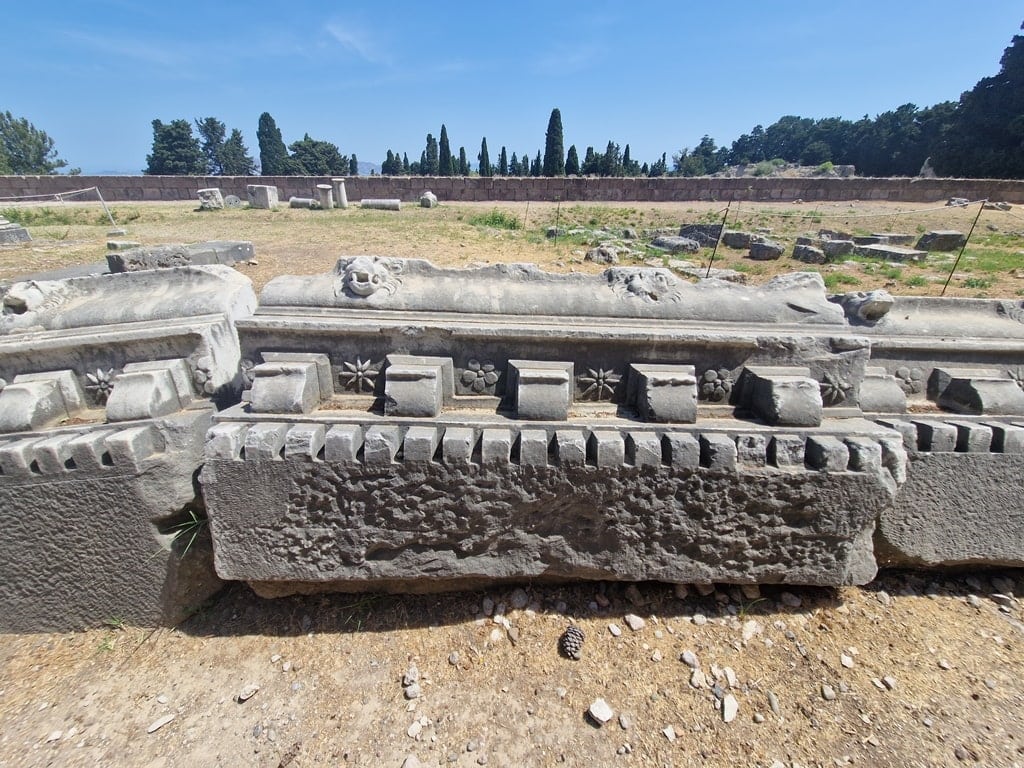
Patient care at the Asklepion was holistic: the body was always taken care of in conjunction with the care of the person’s mind and emotional state. The Asklepion physicians believed that an individual’s innate healing mechanisms would be activated if their mind and emotional state were seen, so calm and positiveness saturated them.
Therefore, the patient was seen in carefully selected locations in the Asklepion, using the natural environment to promote mental and emotional stability and positivity. Then, therapeutic procedures came in two stages: the Katharsis (i.e., Cleansing stage) and the Dream Therapy stage.
During the Katharsis, the patient would receive baths, a special diet, rest, and other practices to ensure absolute comfort and relief from symptoms, promoting mental and emotional calm.
Depending on the ailment being treated, this process could take several days to weeks. It is also likely that this stage was where the scientific part of medicine took place, with actual medical procedures and regimes being applied.
Then came the Dream Therapy, where the patient would be relocated to the Abaton (the “inaccessible” sanctuary). The patient would be coaxed into a state of hypnosis or induced sleep. This could be achieved with various substances, such as hallucinogens, and encouraged to start on the therapeutic dream journey.
The patient’s dreams would then be interpreted and further treatment prescribed by the physicians. The belief was that Asclepius and his daughters Hygeia (her name means Health) and Panacea (her name means Cure All) would visit the patient and diagnose them further.
Hippocrates and the Asklepion in Kos
Asclepius had several Asklepions in various locations throughout Greece, but the one in Kos was probably the most significant. The reason for that was Hippocrates.
Hippocrates was born in Kos in 460 BCE. He was an Asklepeiad, the name given to all physicians with a lineage traced back to Asclepius. He was trained in the Asklepion of Kos, the site where you will visit!
Though he was fully trained by his father, other physicians in the Asklepion, and even high profile philosophers like Democritus, Hippocrates felt that their existing approach to medicine and medical care was mired in superstition and ignorance.
That’s why he traveled around the then-known world to gather knowledge and practices within medicine. He is credited with rebranding medicine as a more scientific than religious endeavor.
Hippocrates’ medical exploits were many. He is said to have expertise in infectious diseases, especially in arresting their further spread. He managed to get the infamous Athenian plague under control, which granted him honorary Athenian citizenship. Hippocrates wrote a series of textbooks and essays on medicine, medical subfields including surgery and dentistry, and medical ethics. The famous Hippocratic Oath is one of them.
Hippocrates’ renown made the Asklepion of Kos the most important medical center of its time and the most scientifically oriented one, given to using evidence-based techniques more than religious healing.
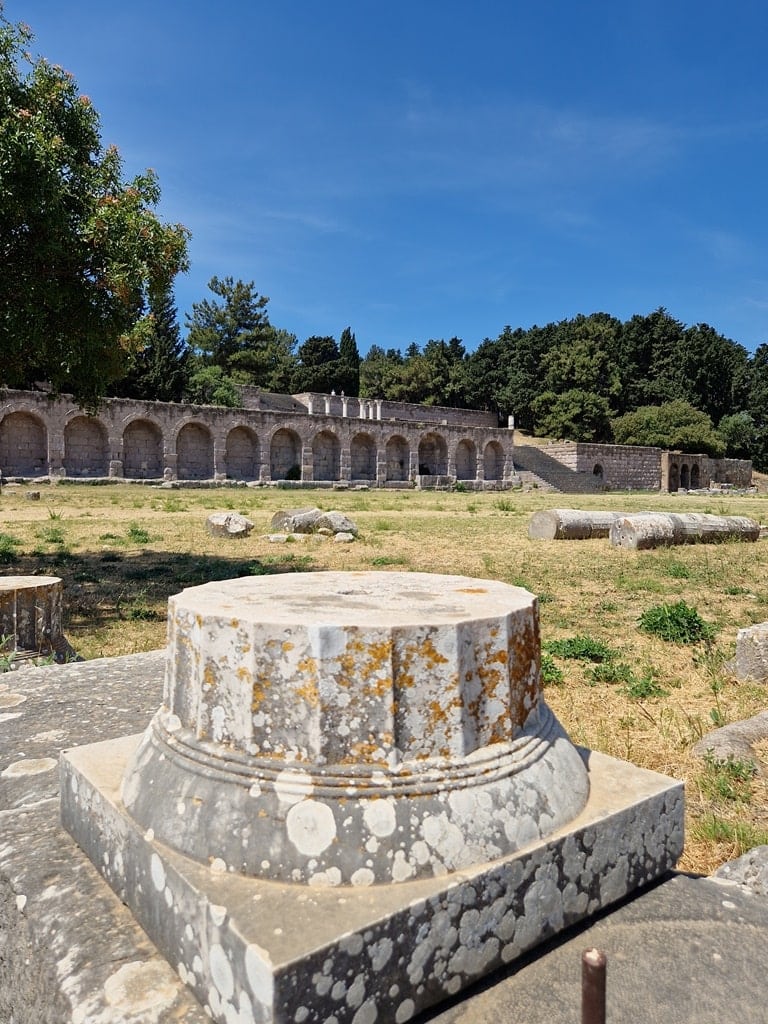
The Asklepion of Kos’ functions
As already described, the Asklepion of Kos functioned as a medical research center. It also functioned as a hospital and hospice. Beyond that, the Asklepion was also a temple. Many artifacts point to how patients also used part of the complex as a place of worship for Asclepius, complete with dedications and appeals for a speedy recovery.
Another fact that shows how the Asklepion functioned as a sacred place for Kos is that anyone within its premises was granted sanctuary, which was observed and respected across ancient Greece. This panhellenic recognition of the sanctuary status was extremely rare, even for other official temples.
What to see in the Asklepion
The Asklepion is a beautiful Hellenistic period temple complex built on the slopes of the hill overlooking Kos’ main town. The area is lush with vegetation and has a gorgeous view of the sea and the coast of Asia Minor: a perfect location for Asclepius’ doctors, who valued the positive impact of nature and the environment in the healing process.
Walking into the complex, you will see that everything is arranged in three terraces, which matches the patient’s journey in the Asklepion:
First terrace
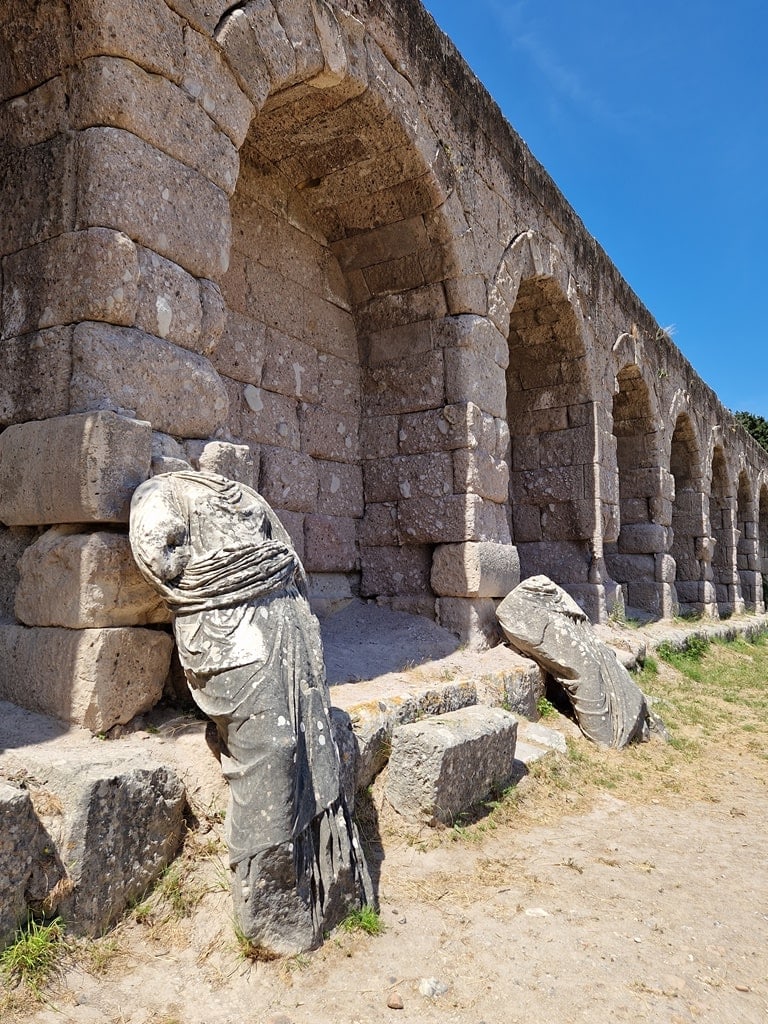
Walk up the 24 steps of the entrance (“propylon”) and columns to the patient rooms’ foundations. There are also walls with niches where there used to be decorative statues. Of those, some busts remain, and you will see them as you walk by. In the buildings of this first terrace, the patients followed the special diets or fasting requirements, had special baths, and prepared for the second terrace.
Ensure you see the bathhouse and the area where hydrotherapy was administered to patients. Walk through the intricate cluster of various rooms with offering rooms, examination rooms, and of course, the dormitory.
Second terrace
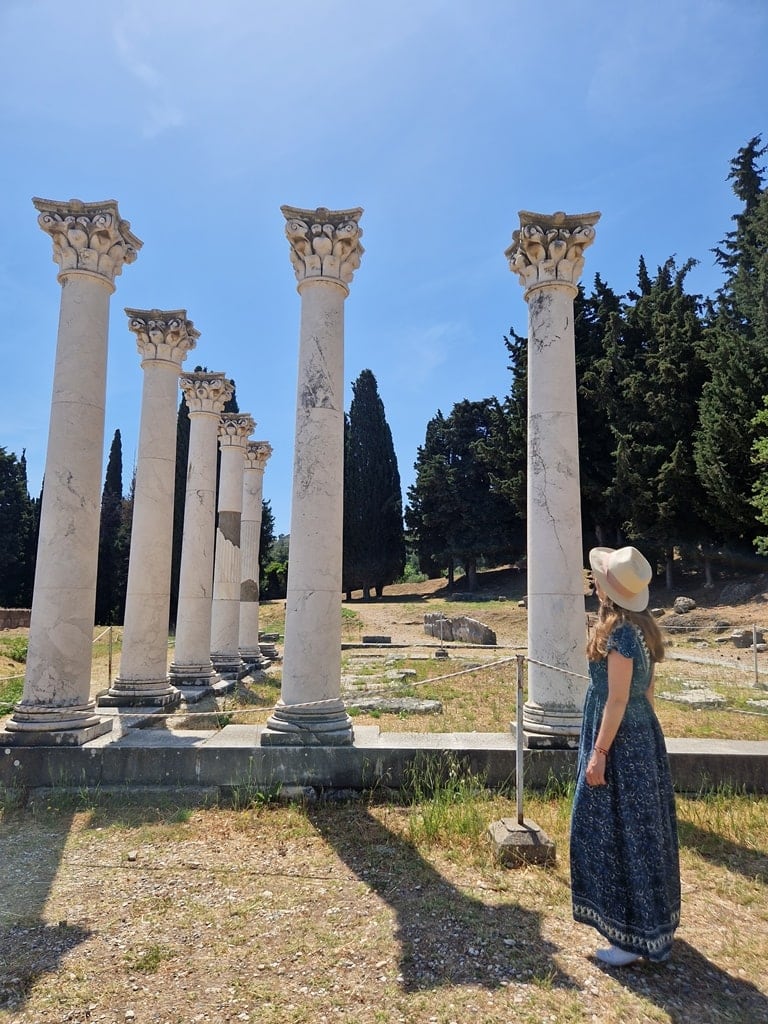
Walk up the marble staircase to the second terrace. This is where the Abaton was: where the patients would be visited by the god Asclepius in their dreams and where the interpretation and final diagnosis of their condition would occur. This is the oldest part of the complex, featuring an altar dating from the 4th century BCE, dedicated to Asclepius.
Make sure you see the rooms where the physicians conferred with each other and the patients and the ruins of two smaller temples. Walk past the restored column row of the Ionic temple to Apollo, and feel the ambiance and unique atmosphere of this most sacred of the sacred areas of the complex.
The third terrace
Finally, go up the staircase and its 60 steps to the grand Doric temple of Asclepius on the third terrace. You can still see the temple’s portico and extra rooms for the patients and visitors. Here is where you can note the passage of history even more, as there are also the remains of a proto-Christian church dedicated to the Virgin Mary (Panagia Tarsou).
Then, as an extra treat, go up the stairs to the top of the complex where Apollo’s forest is. Wander around in its lush surroundings and take in a stunning sweeping view of that side of the island of Kos, the sea, and the coast of Asia Minor as your reward.
Planning a trip to Kos? Find here my guides:
Things to do in Kos
Best beaches in Kos
Day trips from Kos

